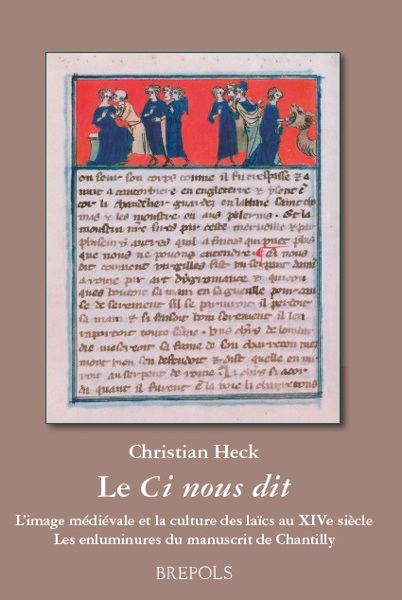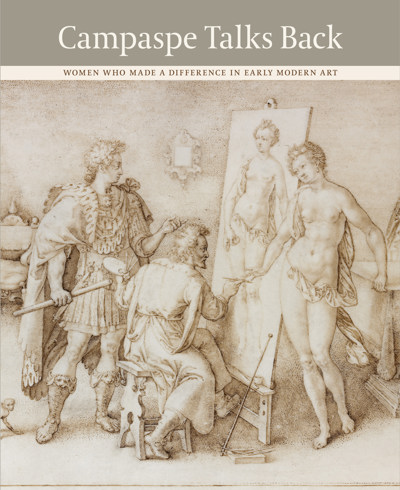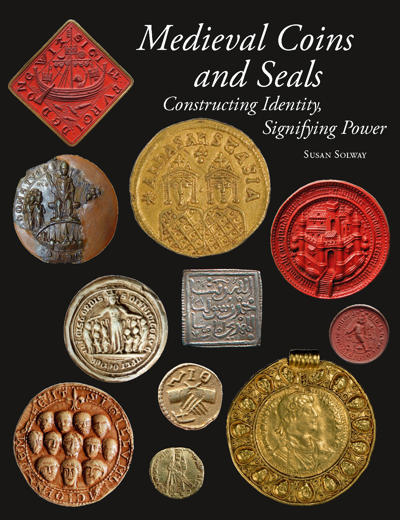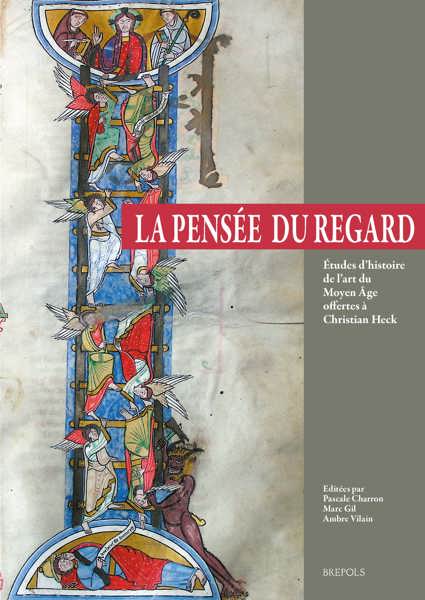
Campaspe Talks Back
Women Who Made a Difference in Early Modern Art
Lieke van Deinsen, Bert Schepers, Marjan Sterckx, Hans Vlieghe, Bert Watteeuw (eds)
- Pages: 436 p.
- Size:230 x 280 mm
- Illustrations:10 b/w, 196 col., 2 tables b/w.
- Language(s):English
- Publication Year:2024
- € 125,00 EXCL. VAT RETAIL PRICE
- ISBN: 978-2-503-61305-5
- Hardback
- Available
Women and portraiture are the core themes of the essays assembled in this book.
" It is impossible to extol all the virtues of this volume, but no one can gainsay the importance of the contributions and of the work of Van der Stighelen, which will continue to provide inspiration and avenues of explorations for many years to come." (Timothy Revell, in The Burlington Magazine, 167, 2025, p. 952)
Lieke van Deinsen is assistant research professor Dutch literature at KU Leuven.
Bert Schepers is senior editor of the Corpus Rubenianum Ludwig Burchard.
Marjan Sterckx is associate professor in the histories of art and interior design 1750-1950 at Ghent University.
Hans Vlieghe is emeritus professor history of early modern art at Leuven University.
Bert Watteeuw is director of the Antwerp Rubenshuis.
With forty-three contributions this book pays homage to Katlijne Van der Stighelen, who has shown exceptional range in her own contributions to the history of art in the Southern Netherlands and beyond. With monographs on Peter Paul Rubens and Anthony van Dyck, she has considerably expanded scholarship on canonical artists. Yet early on, a catalogue raisonné of the portraits of the lesser-known Cornelis de Vos revealed that Van der Stighelen was not one to preserve the status quo but to challenge it. Mindful of protagonists and their historiographical pull, she has consistently rehabilitated artists relegated to the background, in some cases by single-handedly saving them from total oblivion and – remarkable feat – having them added to the canon.
Portraiture, supposedly a sijd-wegh der consten, was paved into a central avenue of inquiry in Van der Stighelen’s work. Her approach to the genre made it into a pathway for the introduction of women artists. What was a sijd-wegh became a zij-weg. From seminal publications on Anna-Maria van Schurman to revelatory exhibitions on Michaelina Wautier, Van der Stighelen’s particular brand of feminism has impacted scholarship as deeply as it has touched the museum-going public.
Women and portraiture are the core themes of the essays assembled in this book. The resulting group portrait is crowded and rambunctious and reflects the varied subject matter that has attracted Van der Stighelen’s professional attention. It also paints a partial portrait of the community of scholars that she has so generously fostered. In trying to summarize the motivations of authors to contribute to this volume or the gratitude of generations of art historians trained by her, it is best to quote the title of the first exhibition on women artists in Belgium and The Netherlands, which Van der Stighelen curated in 1999: Elck zijn waerom.
Introduction
Campaspe, Apelles, and Alexander the Great
Hans Vlieghe, Katlijne: Portrait of an Art Historian
I: Sitters & Subjects
Barbara Baert, Cutting the Gaze: Salome in Andrea Solario's Oeuvre (c. 1465-1524)
Nils Büttner, Rubens, the Capaio Ladies, and Their Niece
Hans Cools, Why Margaret of Parma Should Make It to the Next Version of the Flemish Canon
Liesbeth De Belie, Concerning Orbs and the Value of a Destroyed Portrait
Guy Delmarcel, The Virtuous Women of the Bible: A Series of Baroque Tapestries from Bruges and Their Mysteries
Gerlinde Gruber, Brave (if Brazen) Women: Spartans, not Amazons, by Otto van Veen (1556-1629)
Karen Hearn, Portrait of a Poisoner? An Early Seventeenth-Century British Female Portrait Reconsidered
Fiona Healy, Sacred History Imitating Real Life: How a Curious Portrayal of the Birth of the Virgin Reflects Childbirth Practices in the Early Modern Period
Koenraad Jonckheere, Rubens’s Verwe: Head Studies and Complexion
Elizabeth McGrath, The Girls in Rubens’s Allegory of Peace
Hubert Meeus, Judith’s Maid
Bert Schepers, Lifting the Veil on Justus van Egmont (1602-1674): On Cleopatra Approaching Alexandria and Some Other Newly Identified Designs for Tapestries
Lieke van Deinsen, The Voiceless Virgin and the Speaking Likeness: Anna Maria van Schurman’s Portrait as a Labadist
Hans Vlieghe, Portrait of a Young Woman in Triplicate: On a ‘Rubensian’ Head Study
II: Artists & Artisans
Rudy Jos Beerens, Unravelling the Story of Jannetje Laurensd. Wouters (c. 1640-1722), Tapitsierster
Ralph Dekoninck, Pausias and Glycera by Rubens and Beert: Amorous Emulation and/or Mimetic Rivalry
Kirsten Derks, Leaving Her Mark: Michaelina Wautier’s Signing Practice
Inez De Prekel, Female Artists and Artisans in the Antwerp Guild of St Luke, 1629-1719
Ad Leerintveld, Constantijn Huygens and Louise Hollandine, Princess of the Palatinate, or How High a Highness Could Rise in the Arts
Fred G. Meijer, All in the Family: A Previously Unrecorded Landscape Painter: Catrina Tieling, 1670-?
Judith Noorman, ‘Elck heeft sijn eijgen pop': Dollmaker Drawings by Leonart Bramer and Dolls as Indicators of Class and Identity
Anna Orlando, Sofonisba and van Dyck: A Matter of Style
Marjan Sterckx, Talent and Sentiment: A Portrait of the Artist Marie-Anne Collot (1748-1821) as a Young Woman
Jan Van der Stock, Women Who Stood Their Ground in the Guild of St Luke at the Beginning of Antwerp’s ‘Golden Age’, 1453-1552
Francisca van Vloten, From ‘Russian Rembrandt’ to ‘Baronin’ and ‘Nonna’: Marianne von Werefkin (1860-1938), Evolution and Appreciation
Wendy Wiertz, Craft, Gender, and Humanitarian Aid: The Representation of Belgian Lacemakers in the Era of World War I
Beatrijs Wolters van der Wey, Catharina Pepyn, Rising Star
III: Partners & Patrons
Rudi Ekkart and Claire van den Donk, In the Lead: Another Look at the Role of Women in Seventeenth-Century Family Portraits
Valerie Herremans, Arte et Marte: Countess Maria-Anna Mulert-van den Tympel and Ian-Christiaen Hansche’s Pioneering Stucco Ceilings in Horst Castle (1655)
Corina Kleinert, Hidden in the Footnotes: The Collection of Anna-Isabella van den Berghe, 1677-1754
Hannelore Magnus, ‘Periculum in Mora’: Frans Langhemans the Younger (1661-c.1720) and the Scandalous Elopement of Maria Cecilia de Wille
Volker Manuth and Marieke de Winkel, The Marital Misfortunes and Messy Divorce of a Mennonite Woman: Catharina Hoogsaet
Sarah Joan Moran, Court Beguinage Mistresses as Art Curators
Erik Muls, Isabella and Catharina Ondermarck: Spiritual Daughters on a Mission
Eric Jan Sluijter, Rembrandt’s Saskia Laughing (1633): The Affect and Effect of Reciprocal Love
Bert Timmermans, Art Patronage in an Unequal Playing Field: Women’s Convents during the Building Boom of the Antwerp ‘Invasion Conventuelle’
Ben van Beneden, A Flemish Shepherd for Amalia? Some Thoughts on a Newly Discovered Painting by Thomas Willeboirts Bosschaert
Carla van de Puttelaar, Marriage in Painting: Painterly Collaborations between Juriaan Pool and Rachel Ruysch and a Newly Discovered Portrait of a Girl
Martine van Elk, ‘The Name Gives Lustre’: Anna Maria van Schurman’s Glass Engravings
Bert Watteeuw and Klara Alen, Dealing with Helena
Jeremy Wood, In the Shadow of the ‘Proud Duke’? Elizabeth Percy, Duchess of Somerset (1667-1722), as Patron
Lara Yeager-Crasselt, Painting Margherita: Louis Cousin and Flemish Portraiture in Seventeenth-Century Italy
Leen Huet, Epilogue: Reading between the Lines, Reading between the Brushstrokes – Two letters
Bibliography of Katlijne Van der Stighelen, Compiled by Lies De Strooper and Koen Brosens




